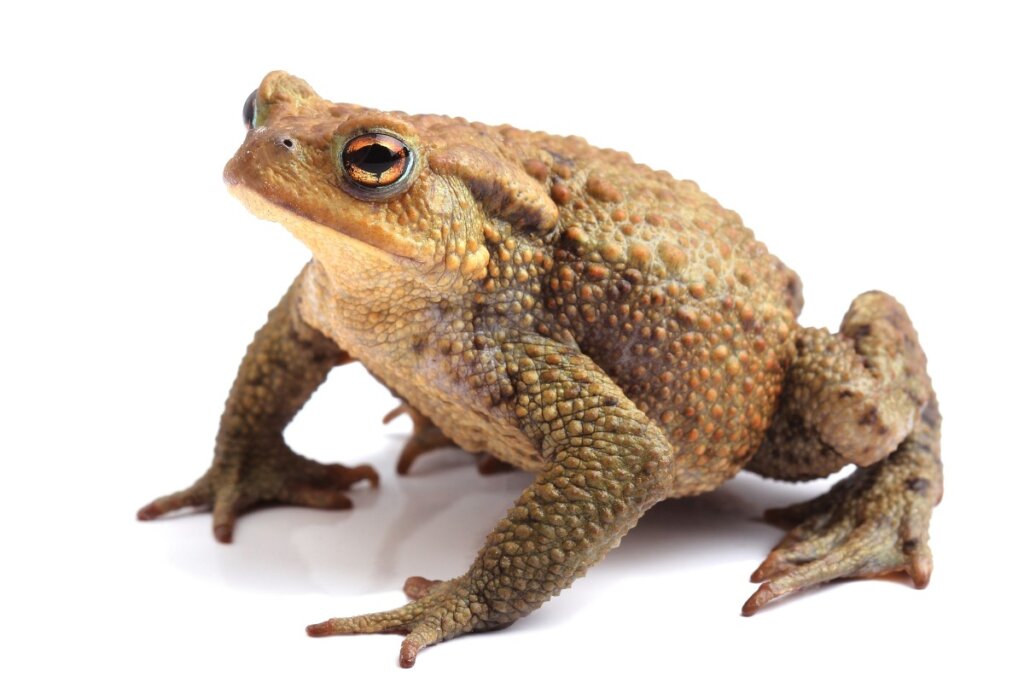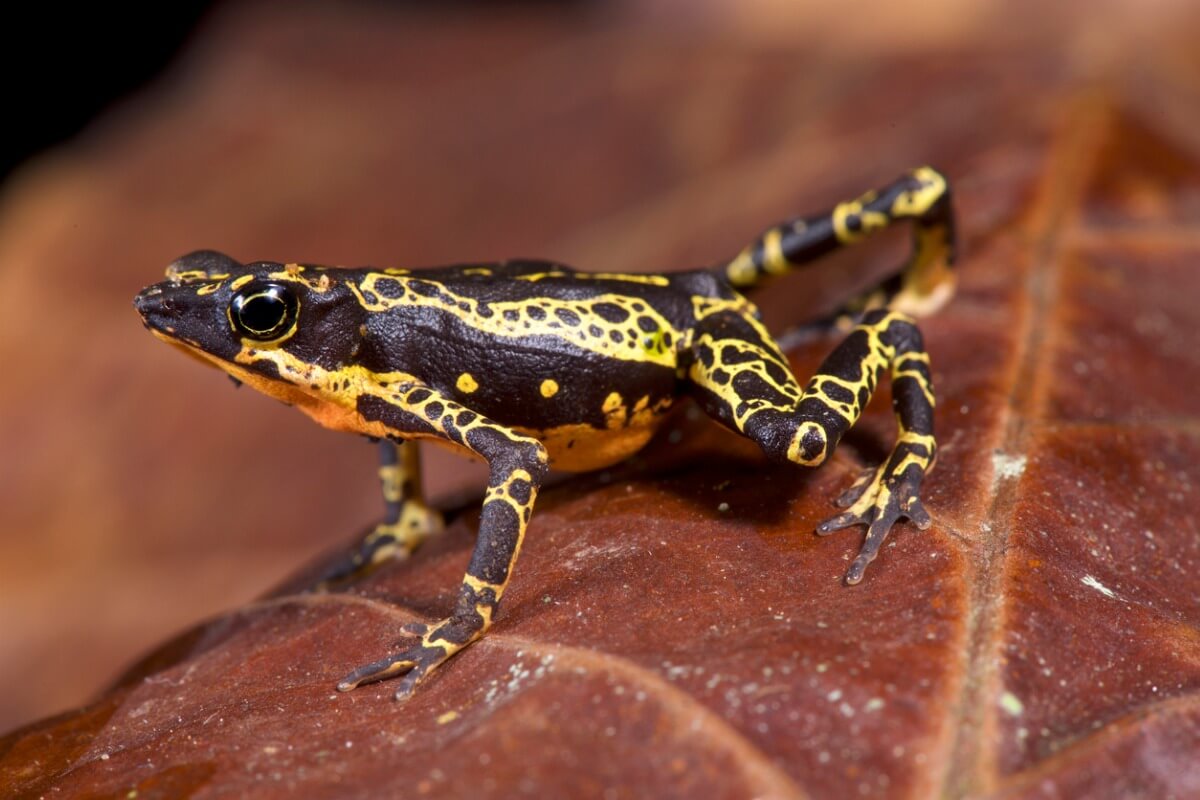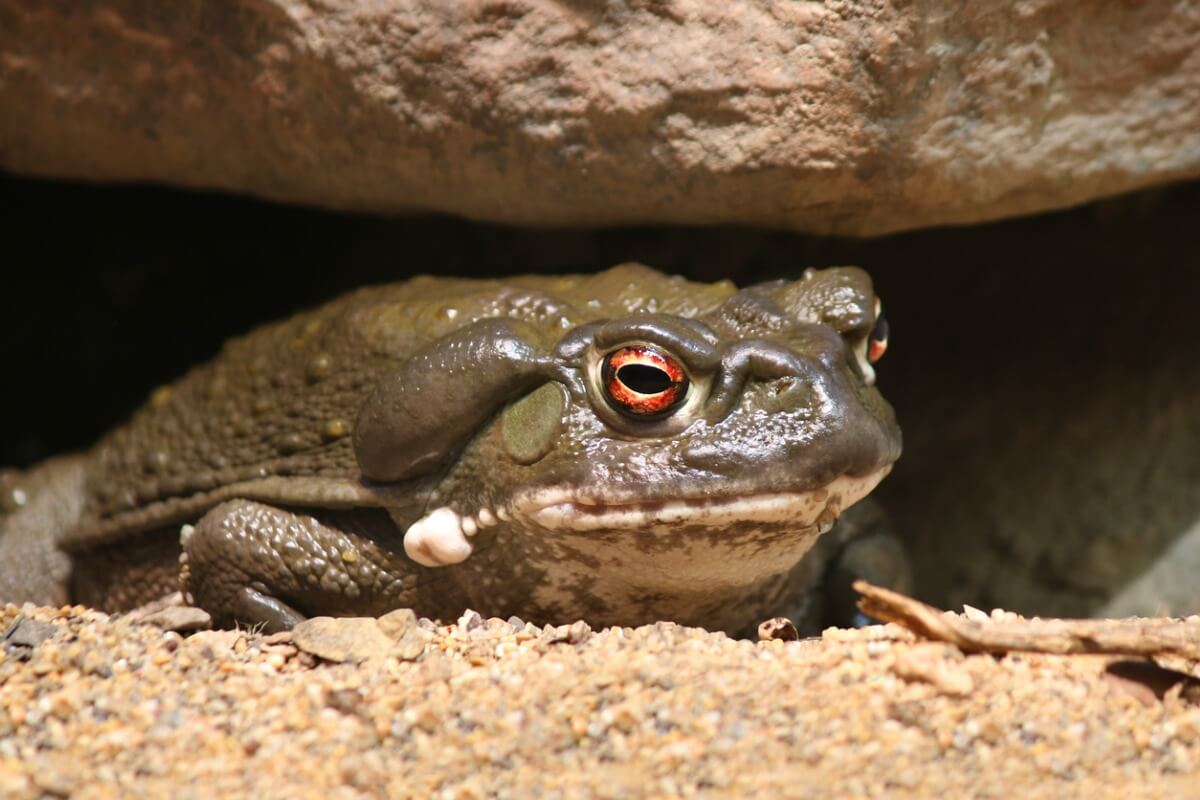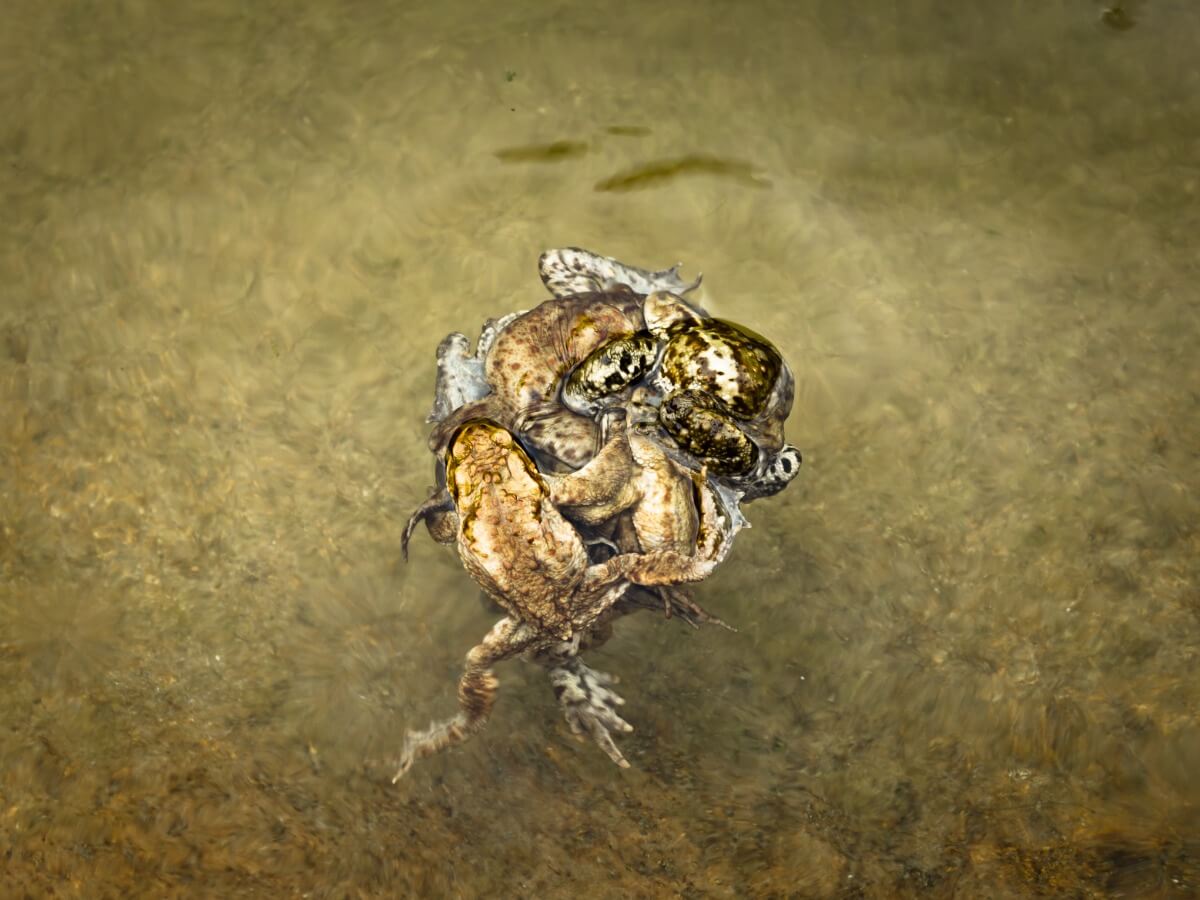10 Curiosities About Toads

Curiosities about toads are almost endless, but, unfortunately, many people aren’t interested in finding out about them. These animals have the reputation of being poisonous, of causing wrinkles if touched or of bringing bad luck to those who cross their path. Nothing could be further from the truth: amphibians are mostly harmless and do an excellent job of controlling pests in ecosystems.
In order to dismantle these myths and clear their bad reputation, we’re going to bring you 10 curiosities about toads that you can’t miss. You’ll say just how fascinating their life cycle and ecology are.
1. Curiosities about toads: toads and frogs are the same
Before bringing you the most impressive curiosities about toads, we should define them at a taxonomic level. Toads are amphibians that belong to the order Anura and differ from the rest of their relatives because they don’t have a tail. There are more than 7300 species of anurans, which represents 88% of the current biodiversity of the Amphibia class.
At this point, it should be noted that both toads and frogs are anurans, so their different names have no taxonomic basis. Toads are said to be more terrestrial and rugged than frogs, but there are many exceptions to this. The categorization between animals is carried out with genetic analysis, not by external appearance.
Frogs and toads are anurans. The difference between these terms is of no taxonomic interest.
2. A proper family of amphibians
Although the terms frog and toad are used incorrectly to categorize the different anurans, we can say that almost all of those that are commonly known as “toads” belong to the Bufonidae family. This taxon contains more than 570 species divided into 52 genera, and all represent the true toads.
Within this family, the genus Atelopus is the most extensive of all, with a total of 96 described species. Curiously, the specimens of this group have nothing to do with a typical toad, as they have very slender limbs, their body is smooth and they lack the characteristic roughness distributed throughout their body. They are even wrongly called “harlequin frogs”.

3. The typical toad is included in its own genus
As a last curiosity of the toads as far as their taxonomy is concerned, we need to note that Bufo is the best-known genus within the Bufonidae family. This group includes the brown, rough, chubby, and orange-eyed toads that we have all encountered at some time. They are eminently terrestrial amphibians, although they require humidity to breathe.
Bufo bufo is the best known common toad in the world.
4. Toads breathe through their skin
Have you ever wondered why the term “amphibian” is always associated with the presence of water? These animals constantly require very high humidity because, incredible as it may seem, they need to have wet skin to breathe through it. Their lungs are very rudimentary, so they obtain 25 to 85% of the O2 they need by passive cutaneous diffusion.
As if this weren’t incredible enough, it’s also necessary to note that amphibians can modulate the amount of blood they transport to the surface of their skin. Although this is relative, it enables them to regulate their obtaining of skin oxygen according to their needs and environmental constraints.
5. Toads produce toxins, but they aren’t dangerous
All members of the genus Bufo have very interesting structures on their backs and behind their eyes. These kidney-shaped “warts” are actually parotoid glands, responsible for the production of toxic compounds. When an animal tries to eat these amphibians, they release their glandular fluid and irritate the predator’s oral cavity.
The poisonous compounds ejected are bufotoxins, a very diverse family of toxic steroid lactones that cause different systemic and local effects after ingestion. Although they aren’t lethal for humans, they can cause very serious symptoms in dogs, cats and other mammals.
A toad will never secrete its toxins if you don’t actively bother it.

6. Hallucinogenic toads?
Another curiosity about toads is that, in certain cultures, the bufotoxins they produce have historically been used as psychedelics. This is the case of Incilius alvarius, an amphibian which can produce enough venom to kill an adult dog.
The 5-MeO-DMT compounds and the bufotenin in the secreted fluid are powerful psychoactive agents that cause very strong effects in humans for an interval of about 15 seconds. The treated forms of these toxins have been used as drugs and aphrodisiacs in recent times, causing at least one human death from poisoning.
7. All toads are hunters
Despite their plump bodies and general clumsiness, toads are strict carnivores that usually feed exclusively on live prey. Their hunting strategy is of the sit and wait type: they just wait for their victim to pass by and pounce on them, using their sticky tongue as a trap.
Toads are insectivores and feed on moths, beetles, ants, grasshoppers, worms, snails, and whatever invertebrates fit in their mouths. The Rhinella marina species is an exception to this rule, because thanks to its unusual size (54 centimeters – 21 inches – extended) it can also prey on bats, birds, reptiles, and even mammals.
Unlike most toads, the Rhinella marina species also feeds on carrion and dog food.
8. Toads need water to reproduce
Most species of toads make an exodus from the survival zone to the breeding area during the spring. This place of courtship and release of the eggs must be a lake or body of water (permanent or ephemeral). They are philopatric animals, which means they always return to the same place to reproduce.
The fertilization of toads is external: the male embraces the female in a position called the amplexus and promotes the release of a string of eggs into the water. The male fertilizes her and abandons her quickly, as his intention is to fertilize as many eggs as possible.
A female of the Bufo bufo species can lay 3,000 to 6,000 eggs at one time. Although this figure seems excessive, you must bear in mind that the vast majority of larvae will die, either in their tadpole phase, before hatching, or just when they metamorphose out of the water. These animals lay many eggs, but very few reach adulthood.
9. An explosive breeding method
Although each species is different, another general characteristic of toads is that their reproduction is usually explosive. Hundreds of males flock to the same body of water to sing and attract females, intercepting them as soon as they can to catch them in amplexus. It’s normal for males to jostle or hug each other in an act of reproductive frenzy.
As shocking as it may seem, mating balls or reproductive balls of 4, 5, 6 or more males are sometimes observed hugging the same female. The pressure is such that sometimes it drowns and ends up dying from the weight of its contenders before or after laying the eggs in the water.
Explosive breeding minimizes the rate of predation by hunters, but greatly increases competition between males of the same species.

10. They aren’t dangerous animals and require our help
As the last of our curiosities about toads, it must be emphasized that they aren’t dangerous animals. Although they produce bufotoxins that can produce very uncomfortable symptoms, you won’t notice their effects unless you put a specimen in your mouth (!) or rub your eyes after touching one. These amphibians are extremely peaceful and never seek direct confrontation.
In addition, toads, and 41% of amphibians in general, are in danger of extinction, as climate change, water pollution, the introduction of exotic species, and certain infectious diseases are killing them at an alarming rate. These cute little vertebrates require conservation efforts before it’s too late.
We hope you’ve enjoyed our curiosities about toads!
All cited sources were thoroughly reviewed by our team to ensure their quality, reliability, currency, and validity. The bibliography of this article was considered reliable and of academic or scientific accuracy.
- Pettit, G. R., Kamano, Y., Drasar, P., Inoue, M., & Knight, J. C. (1987). Steroids and related natural products. 104. Bufadienolides. 36. Synthesis of bufalitoxin and bufotoxin. The Journal of Organic Chemistry, 52(16), 3573-3578.
- Pettit, G. R., & Kamano, Y. (1972). The structure of the steroid toad venom constituent bufotoxin. Journal of the Chemical Society, Chemical Communications, (2), 45a-45a.
- Ashok, G., Sakunthala, S. R., & Rajasekaran, D. (2011). An interesting case of cardiotoxicity due to bufotoxin (toad toxin). The Journal of the Association of Physicians of India, 59, 737-738.
- Lajmanovich, R. C. (1994). Hábitos alimentarios de Bufo paracnemis (Amphibia, Bufonidae) en el Paraná medio, Argentina. Revista de Hydrobiologia Tropical, 27(2), 107-112.
- Coloma, L. A., Lötters, S., & Salas, A. W. (2000). Taxonomy of the Atelopus ignescens complex (Anura: Bufonidae): designation of a neotype of Atelopus ignescens and recognition of Atelopus exiguus. Herpetologica, 303-324.
